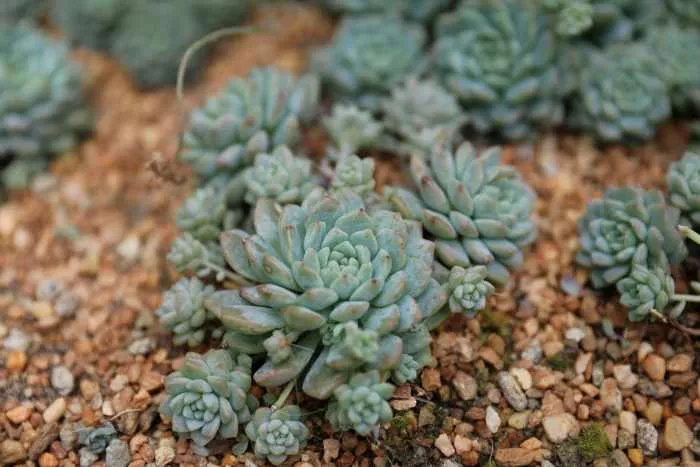Succulents are beloved for their unique shapes, vibrant colors, and low maintenance requirements. As drought-resistant plants, they have adapted to survive in arid environments, which often leads to questions about their light needs. Understanding how much sun your succulent needs is crucial for its health and growth. This article will provide a comprehensive guide to the sunlight requirements of succulents, helping you create the ideal environment for your plants.
The Importance of Sunlight for Succulents
Sunlight is essential for all plants, including succulents. It plays a vital role in photosynthesis, the process by which plants convert light energy into chemical energy. Through photosynthesis, succulents produce the food they need to grow and thrive. However, succulents have evolved in various environments, leading to different light requirements based on their species and natural habitats.
Understanding Light Requirements
Succulents can generally be categorized into three light requirement groups: full sun, partial sun, and low light. Knowing which category your succulent falls into will help you provide the appropriate amount of sunlight.
Full Sun Succulents
Full sun succulents thrive in bright, direct sunlight for most of the day. They typically require at least six hours of direct sunlight daily. Common full sun succulents include:
Echeveria
Sedum
Aloe Vera
Jade Plant (Crassula ovata)
These plants are well adapted to intense sunlight and can tolerate heat. However, when introducing them to full sun, it is important to acclimate them gradually to avoid sunburn.
Partial Sun Succulents
Partial sun succulents do well in bright, indirect light or filtered sunlight. They typically require about four to six hours of sunlight each day. Common partial sun succulents include:
Haworthia
Graptopetalum
Zebra Plant (Haworthia fasciata)
These plants can benefit from some direct sunlight but may suffer if exposed to intense afternoon sun for extended periods. Placing them near a window with sheer curtains can provide the right balance of light.
Low Light Succulents
Low light succulents can survive in conditions with limited sunlight. They typically thrive in indirect light or areas with bright but filtered light. Common low light succulents include:
Snake Plant (Sansevieria)
Pothos
Peace Lily
While these plants can tolerate lower light levels, they still need some light to grow. Placing them in a well-lit room or near a window that receives indirect light is ideal.
Factors Affecting Sunlight Needs
Several factors can influence how much sunlight your succulent needs. These include:
Species
Different succulent species have evolved to thrive in varying light conditions. Researching the specific light requirements of your succulent species is essential for its care.
Season
The intensity and duration of sunlight change with the seasons. In the summer, the sun is stronger, and plants may require more shade during the hottest parts of the day. In winter, when sunlight is less intense, succulents may benefit from more direct light.
Location
The location of your succulent in your home can significantly affect its light exposure. South-facing windows generally provide the most sunlight, while north-facing windows offer the least. East-facing windows provide morning light, which is often gentler, while west-facing windows receive intense afternoon sunlight.
Acclimatization
When moving succulents from one light condition to another, it is important to acclimate them gradually. Sudden changes in light can cause stress and lead to sunburn or etiolation, where the plant stretches toward the light source.
Signs of Improper Light Exposure
Monitoring your succulent for signs of improper light exposure is crucial for its health. Here are some common indicators:
Etiolation
If your succulent appears stretched out with long stems and sparse leaves, it may be reaching for light. This condition is known as etiolation and indicates that your plant is not receiving enough sunlight.
Sunburn
If you notice brown, crispy patches on the leaves, your succulent may be getting too much direct sunlight. Sunburned leaves can become discolored and may eventually die.
Leaf Drop
If your succulent starts dropping leaves, it could be a sign of stress from insufficient light or excessive light exposure.
Adjusting Light Conditions
To ensure your succulent receives the right amount of sunlight, you may need to adjust its location. Here are some tips for optimizing light conditions:
Move Closer to a Window
If your succulent is not receiving enough light, consider moving it closer to a window. Ensure that it receives bright, indirect light or filtered sunlight.
Use Sheer Curtains
For succulents that require partial sunlight, using sheer curtains can help filter harsh sunlight while still allowing enough light to reach the plant.
Rotate Your Plant
Regularly rotating your succulent can help ensure even light exposure on all sides. This practice can prevent uneven growth and help maintain a balanced shape.
Consider Grow Lights
If natural light is insufficient, especially in winter, consider using grow lights. LED grow lights can provide the necessary spectrum of light for healthy growth. Position the grow light about 12 to 18 inches above the plant and leave it on for 12 to 16 hours a day.
Conclusion
Understanding how much sun your succulent needs is essential for its overall health and growth. By recognizing the specific light requirements of your succulent species and adjusting its environment accordingly, you can create the ideal conditions for thriving plants. Monitor your succulents for signs of stress and make adjustments as necessary. With the right care, your succulents will flourish and bring beauty to your home.


